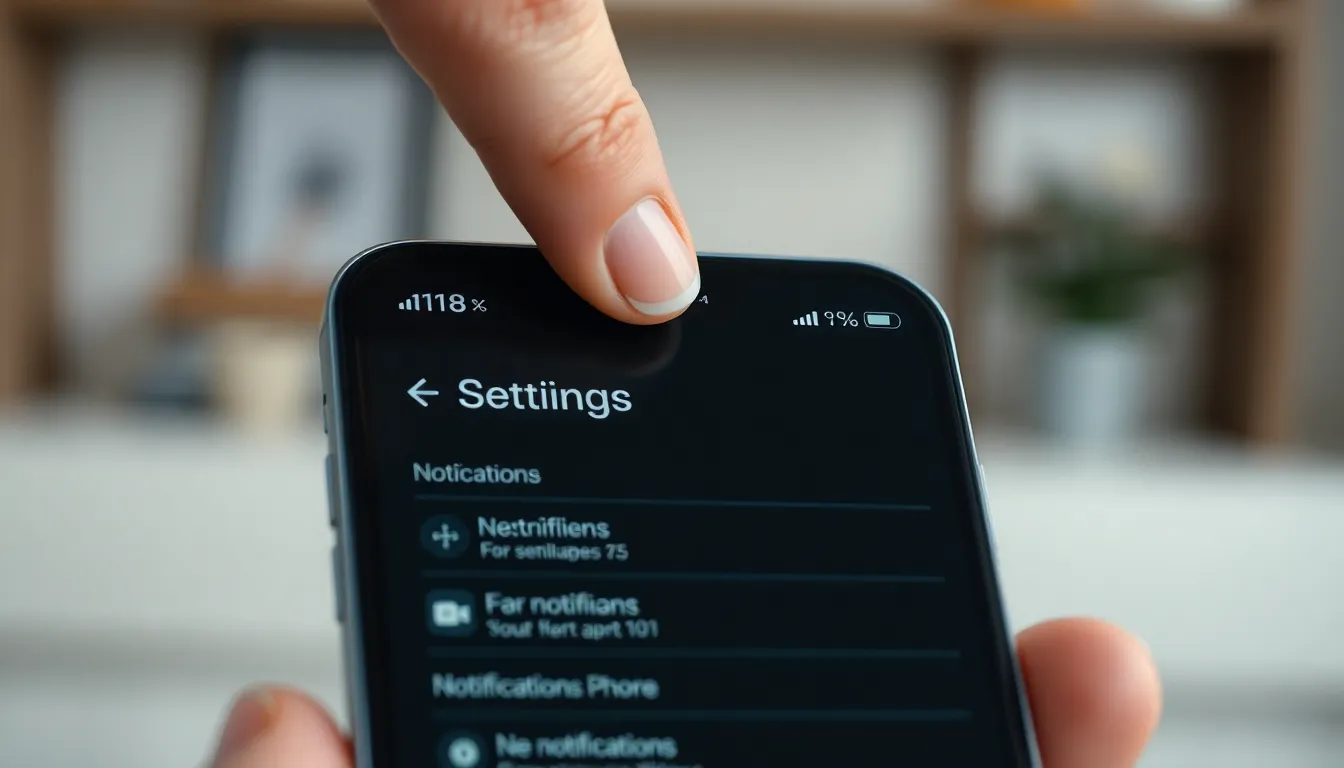Table of Contents
ToggleEver been jolted awake at 3 a.m. by a blaring emergency alert on your iPhone? It’s like your phone’s trying to audition for a role in a horror movie. While these alerts can be lifesavers, they can also feel like an unwanted guest who just won’t leave.
If you’re tired of your phone playing the role of alarm clock for every little emergency, you’re not alone. Many users are eager to regain their peace and quiet without sacrificing safety. Luckily, turning off those pesky alerts is easier than finding a good Wi-Fi signal. Get ready to reclaim your tranquility and silence those surprise wake-up calls.
Understanding Emergency Alerts
Emergency alerts serve as critical notifications for public safety. They provide timely information about severe weather events, natural disasters, and other emergencies affecting local communities.
What Are Emergency Alerts?
Emergency alerts are push notifications sent to smartphones during critical situations. They occur through the Wireless Emergency Alerts system. Messages may include severe weather warnings, AMBER alerts for missing children, or other urgent threats. Notifications typically appear on the lock screen and play a loud sound, ensuring immediate attention.
Importance of Emergency Alerts
Emergency alerts play a vital role in ensuring public safety. They deliver real-time information, allowing individuals to make informed decisions during emergencies. These alerts can inform about imminent dangers such as hurricanes, tornadoes, or flash floods. Relevant authorities prioritize these notifications to protect lives and property. Ignoring them could result in missed opportunities for safety.
How to Access Alert Settings on iPhone

Accessing alert settings on an iPhone involves a few simple steps within the Settings app. Users can customize how and when notifications appear.
Navigating through Settings
To begin, open the Settings app on the home screen. Once inside, scroll down until reaching Notifications. Tapping on Notifications reveals a list of all apps and alert categories. Following this, select the option labeled Government Alerts. This section displays various types of emergency alerts available for customization. Adjustments can be made here by toggling the desired alerts off or on.
Finding Notification Preferences
Finding notification preferences is straightforward. From the Notifications menu, users should look for individual apps to manage alert types. Clicking on an app provides specific notification settings to modify. Toggle off alerts for specific situations or turn off sounds if desired. These changes help streamline the notification experience on the iPhone. Explore each app’s settings to ensure preferences align with personal requirements.
Steps to Turn Off Emergency Alerts on iPhone
Managing emergency alerts can enhance the user experience on an iPhone. Follow these steps to adjust your settings.
Disabling Government Alerts
Accessing the government alert settings is straightforward. Navigate to the Settings app on your iPhone. From there, scroll down and select Notifications. Locate the Government Alerts section. Here, users can toggle options for alerts like Emergency Alerts and AMBER Alerts. Unchecking these options will effectively disable them. Staying informed of emergencies is essential, but silencing alerts can provide peace when desired.
Turning Off Alert Types
Personalizing alert types enhances notification management. Within the Notifications section, scroll down to find individual apps. Selecting an app reveals its specific alert settings. Users can adjust alert styles, sounds, and vibrations according to their preferences. Customizing these settings allows for a more tailored experience. Removing unwanted notifications ensures a smoother daily routine while retaining crucial alerts when necessary.
Common Issues and Troubleshooting
Managing emergency alerts on an iPhone can lead to some challenges. Users often encounter unexpected notifications even after adjusting their settings.
Why Alerts May Still Appear
Alerts might still show up due to system overrides. The iPhone prioritizes emergency notifications to ensure critical information reaches users. Users may also not realize that local emergency management agencies can send notifications independently of device settings. Notifications for certain severe weather alerts remain active even when users toggle them off. Additionally, some apps may generate alerts even if emergency alerts have been disabled in the settings. Understanding these nuances helps users better navigate their notification preferences.
Re-enabling Alerts if Needed
Restoring emergency alerts is straightforward. Users can revisit the Settings app and navigate back to the Notifications section. Once there, selecting Government Alerts reveals toggles for Emergency Alerts and AMBER Alerts. By flipping the switches back on, users can receive important notifications again. Users may also check individual app settings to ensure alert permissions are fully active. Alerting preferences can easily adapt to changing needs for information.
Managing emergency alerts on an iPhone can significantly enhance the user experience. By following the outlined steps to customize notification settings users can achieve a balance between staying informed and enjoying uninterrupted peace.
While emergency alerts play a crucial role in public safety it’s important for individuals to have control over their device’s notifications. The ability to toggle specific alerts on or off empowers users to tailor their iPhone experience according to personal preferences.
With the right adjustments users can ensure they receive essential information while minimizing disruptions during their daily lives.





